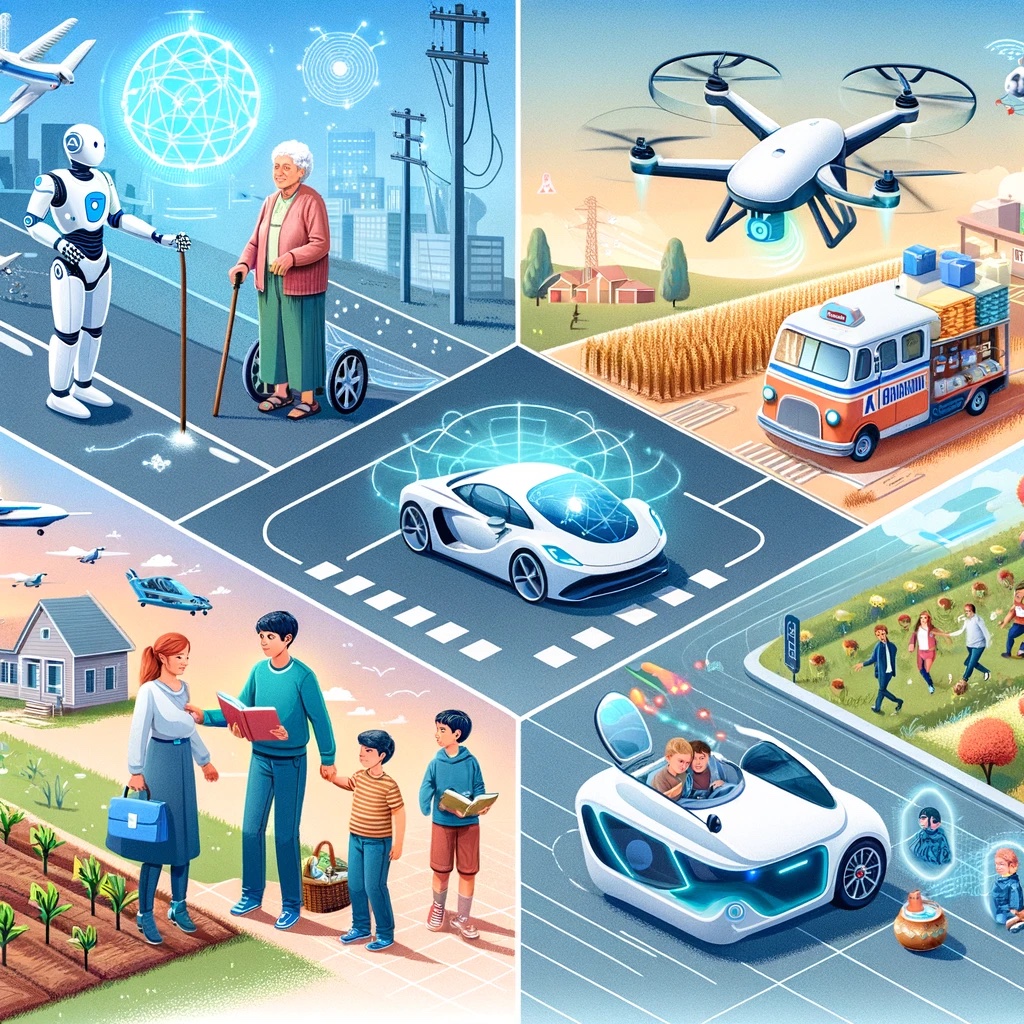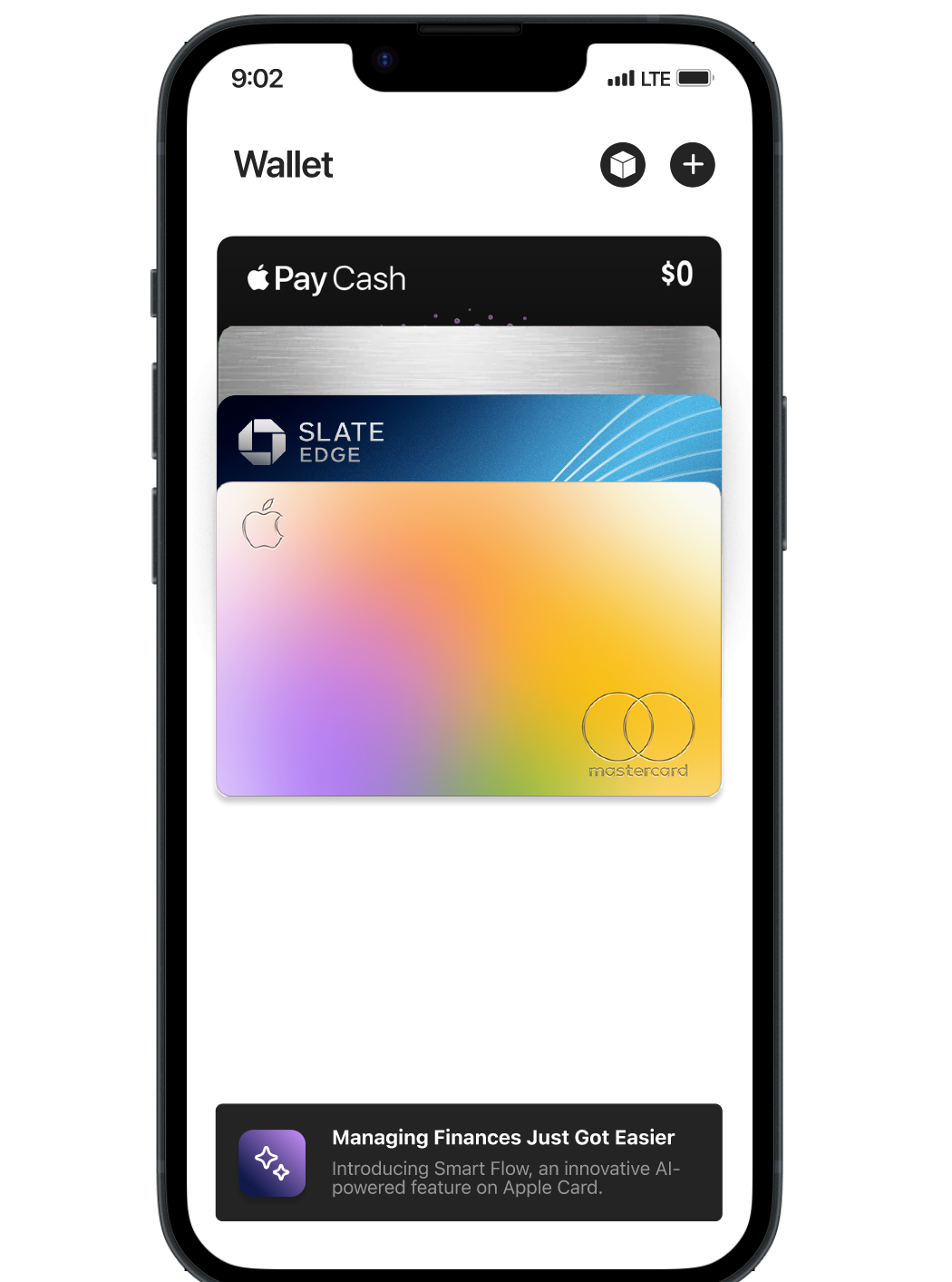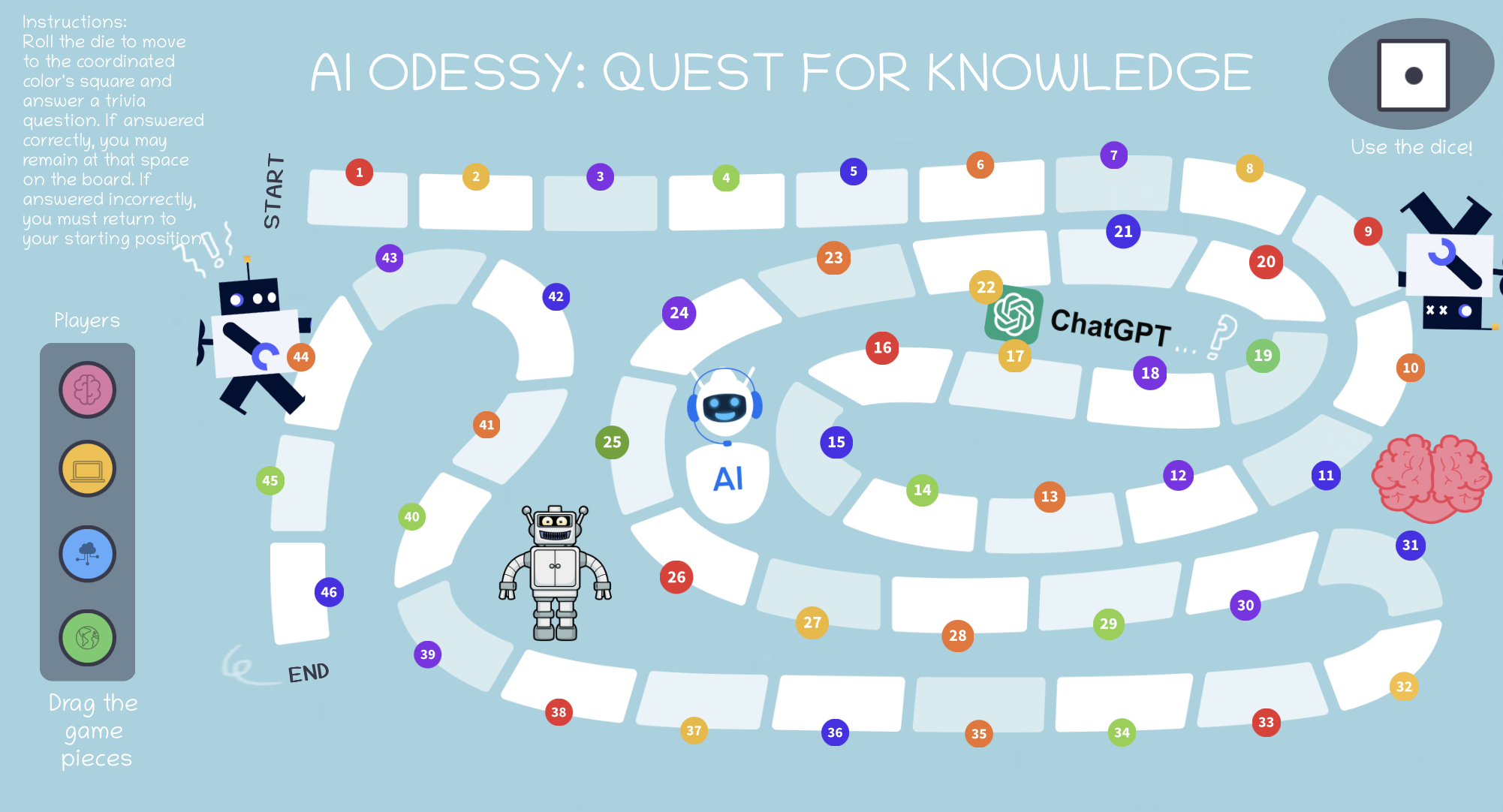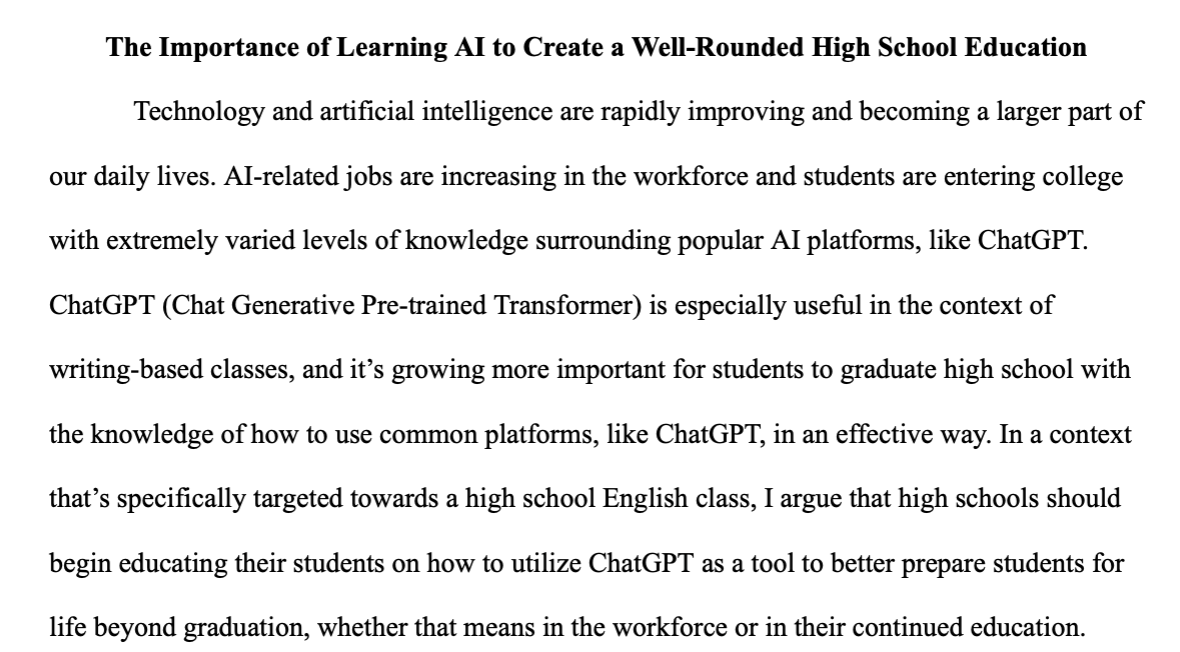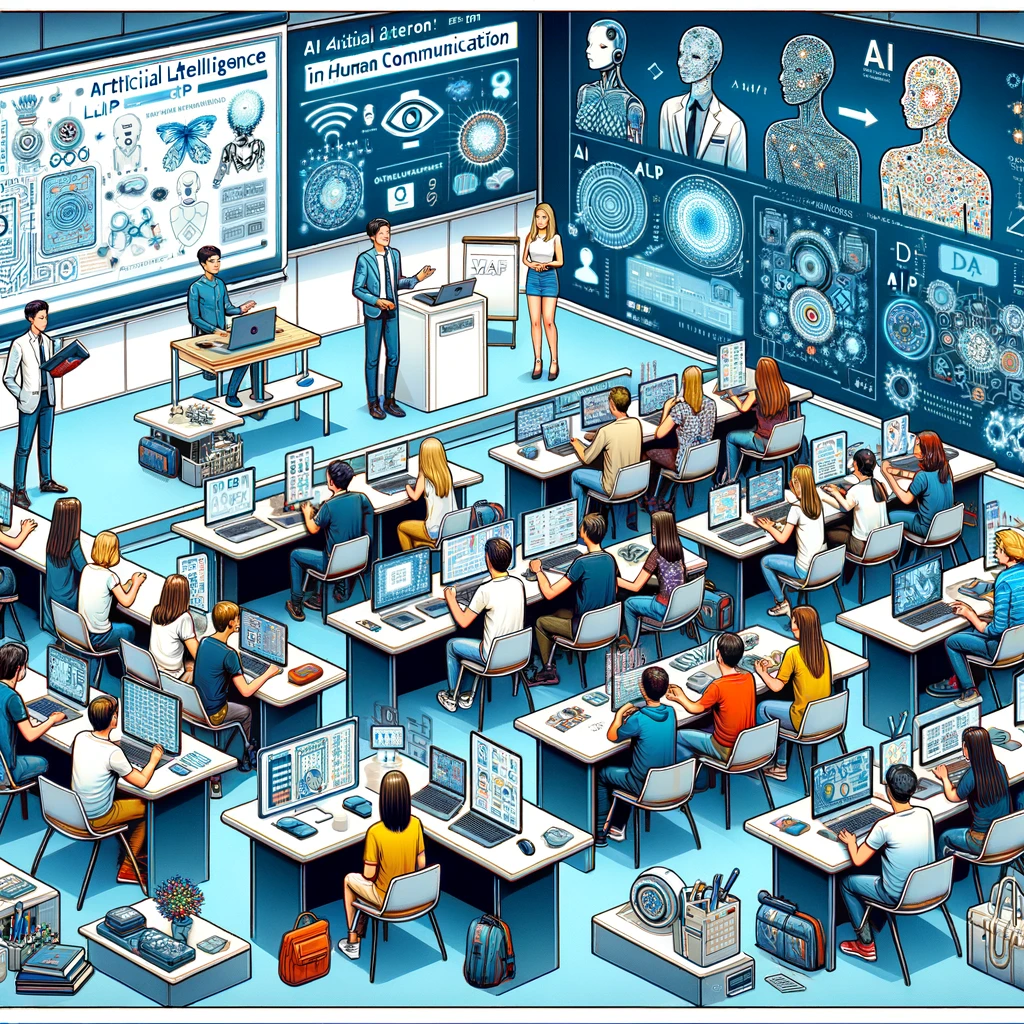Nina Rhines and Connor Pummill – We felt that this class was crucial to our learning about how generative AI works and how this new technology will impact our futures. As time goes on, it becomes more and more imperative to understand this technology, especially as we start to enter the workforce. While we recommend that everyone take this class or a similar class, we recognize that not everyone has the time or bandwidth in their schedules, so we wanted to create a resource that other students could use in order to educate themselves on generative AI. In this class, we discussed that one of the dangers of AI is that if there is unequal access to this technology, educational and wealth gaps will only increase, so this project is our attempt at increasing access to education on AI and decreasing these gaps.
Emily You - My final project is a working design prototype of a potential integration of an AI-powered tool called Smartflow for the Apple Card mobile app. The prototype walks through the use cases of Smartflow and its various features including personalized recommendations based on user purchase history, a virtual buddy chat function that assists with payment or personal-finance related questions, credit scoring and risk assessment, and automatic budgeting which seamlessly categorizes transactions and provides suggestions on spending habits in order for the user to achieve their spending goals. This prototype directly connects to course content by demonstrating a case study of what AI can do in the payments industry, a place where we could begin to see more AI tools created in the near future. One key component to this project is the addition of a ‘Statement of Ethics and Transparency’ at the bottom of the main page introducing Smartflow. Based on course learnings, particularly from the weeks on ‘Breadth of AI applications’ and ‘AI in Ethics’, I learned that it is increasingly important to deliver transparency as AI becomes more integrated with technological systems. However, it is even more important that everyday users are able to make sense of the claims and ethical policies to avoid the “black box” that large
corporations tend to produce.
I also was inspired by our discussions during class about how AI can enhance personalization and facilitate learning. My designs reflect the capabilities for AI to promote a sense of learning around financial literacy and holding an individual accountable in achieving personal finance goals. Those who have not had the opportunity to access financial planners or information as easily, but are Apple Cardholders, can take advantage of this resource as a way to save time and continuously improve their financial well being. Creating this final product has left me wondering whether or not financial institutions themselves will work in collaboration with AI companies, such as OpenAI, or if their approach would be to create AI models themselves given their extensive knowledge and ownership over their services.
Bridget Miller - For my final project I chose to create both a virtual and physical version of a board game
designed by AI. I wanted the game to simulate Candyland, whilst including Trivia questions
coordinated with each color on the board, and asked AI how it thought I should do this. I
gave AI a set of six topics that I wanted the game to focus on, and allowed the AI to develop
a set of rules, and gameplay for the user to follow.
Renata Martell - My website has many sections and pages focusing on different topics within AI in education. For example the website starts off presenting a “home” page that describes the many topics the website. Then you can go on to explore an “about” page, and others ranging from “applications
of AI in education” to “training and development”. Each page and section has a thorough, but general amount of information, and is meant to be a starting point for those wanting to learn more about AI in education. I felt like there was an opportunity for a site like this because so many people don’t know the general information about the many considerations involved with utilizing AI in education and academics.
The majority of what I remember covering in class about this topic had to do with the
appropriate use of AI in schools and policy and regulation surrounding this topic. So for my website I wanted to include other sections, such as teacher training and development and the applications of AI in education. Ultimately, I wanted my site to be the first step that someone should take in order to gain a general understanding of what AI is and how it can help in schools and education - I also wanted to be sure to present the many challenges and ethical risks that AI
poses
Megan Harming - The following is a proposal to high schools about the importance of incorporating lessons
surrounding the use of artificial intelligence platforms, specifically ChatGPT, into an upper-level
college-preparatory curriculum. As AI becomes increasingly incorporated into the workforce,
students should learn how to effectively use AI platforms in a way that can benefit them in their
post-graduation lives. A well-rounded education that can best prepare high school students for
their future now includes AI. My own personal experience regarding my transition from high
school to the University of Michigan without any prior knowledge of AI platforms will be
considered. Along with providing reasoning for a needed increase in AI-based education, I’ve
created a mock lesson plan that could be used as part of the curriculum, which centers around
comparing the experience of writing a paper with the use of ChatGPT versus without the use of
ChatGPT.
Madeline Johnson and Janani Murugesan - For our final project, we decided to collaborate and create a user-friendly and interactive website that consists of AI policies for the University of Michigan and the community. In our website, we included a comprehensive library of AI policies we thought would be most important in a university and community setting. We also included many other interactive elements with
the aim to encourage individuals to want to learn about AI policies.
This course will provide students with an overview of the ways in which artificial intelligence (AI) […]
